Join the Hide community
Get access to live stream, lessons, the post exchange, and chat with other snipers.
Register
Download Gravity Ballistics
Get help to accurately calculate and scope your sniper rifle using real shooting data.

Install the app
How to install the app on iOS
Follow along with the video below to see how to install our site as a web app on your home screen.
Note: This feature may not be available in some browsers.
You are using an out of date browser. It may not display this or other websites correctly.
You should upgrade or use an alternative browser.
You should upgrade or use an alternative browser.
MOA vs Mil
- Thread starter chickon1
- Start date
This is WAY off. My dad spots for me a lot and he uses terms such as... "I think it was 2 and 2/3s feet right", "one yard left", "six inches high and maybe loaf of bread right", and the classic "didn't see, shoot again". Anybody want to come spot for me???When you call corrections for your shooters in whatever angular unit of measurement they use in their scope:
MOA you say "right point 25, up point 5"
In mils you say "right point 2, up point 5"
Has nothing to do with yards, meters, inches, centimeters, etc.
If you tell someone to come right 9 inches or 15 centimeters, and the target is 627 yards away,, they have to do math for the corresponding number of clicks in their scope to equal that about of linear measurement at that yardage to get the impact. Stupid, and time wasting when you need to get that follow-up shot done right now, right now. Not right now, do math, right now.
This is why I have FFP mil scopes and a FFP mil reticle spotting scope for long distance stuff so anyone who spots for me can call corrections in mils. Plus with FFP scopes my turret adjustments match the reticle subtentions at all magnifications.
There's a term for this, it's called Aspergers Syndrome. BTW, I think a lot of you are on the spectrum.Remember the thread just like this by that joelinux guy? After pages of him telling the forum he was the smartest guy around he finally declared that we couldn't understand him because he was an engineer..
Welcome to the forum. Weaponized autism is definitely a thing here. Thanks for noticingBTW, I think a lot of you are on the spectrum.
They both work. The MOA is a little easier to figure in your head. Forget about the x.955 crap Just multiply by 1 and subtract 5 yards every 100 or 1 for every 20 yards. The math for MOA is easier on face value. But, from years of experience, I can tell you that is easier on the brain to hold 2 mils left than it it is to hold 7 minutes left for any extended amount of time. The type of turrets don't really matter with practice. Practice with what you have.
It that a thing? Never seen that before.
Where can I buy a 5MPH gun?Those who stir the shit pot, get to lick the spoon.
Another simplification is the MPH of your gun.
5mph gun = .1mil at 100, .2@ 200, etc.
Can you figure it in moa? Sure, just not as simple.
We aren't all "computer engineers".
But which end?BTW, I think a lot of you are on the spectrum.
ThisIf you insist on this kind of mental masturbation its your prerogative but it's not going to help you shoot any better.
@rustyinbend
Rule of thumb...
Look at the first number of the G1 BC for your bullet. A .5xx should take a 5mph crosswind to move the bullet impact .1 mil at 100yards. .2mil at 200, .3 at 300, etc.
A 10mph will move the same bullet .2 at 100.
.308 FGMM 175gr has .a 496.BC @2600fps.
@Jack Master has done some great spread sheets in mils and moa, the simplicity of mils is obvious on a wind rose.
Rule of thumb...
Look at the first number of the G1 BC for your bullet. A .5xx should take a 5mph crosswind to move the bullet impact .1 mil at 100yards. .2mil at 200, .3 at 300, etc.
A 10mph will move the same bullet .2 at 100.
.308 FGMM 175gr has .a 496.BC @2600fps.
@Jack Master has done some great spread sheets in mils and moa, the simplicity of mils is obvious on a wind rose.
Last edited:
I’m a very good driver...There's a term for this, it's called Aspergers Syndrome. BTW, I think a lot of you are on the spectrum.
That one is in the epic threads, this one has potential.
O yeah, I had forgotten about that dude
As someone who started shooting precision rifles (varmints) back in 1995, I have both MOA and MIL optics, and it only makes it a little more difficult when you are trying to spot for someone and they are using the opposite of whatever you are using.
The thing I find interesting is when people compare the two, and the MOA guys always use round numbers, like the 600 yard example earlier. What happens if you are 7.5" low at 633 yards? Or 22" high at 1030 yards?
Math sucks. Using a ruler, AKA a reticle, to actually measure the difference, makes life super easy no matter what the unit of angular measurement that you are using.
The thing I find interesting is when people compare the two, and the MOA guys always use round numbers, like the 600 yard example earlier. What happens if you are 7.5" low at 633 yards? Or 22" high at 1030 yards?
Math sucks. Using a ruler, AKA a reticle, to actually measure the difference, makes life super easy no matter what the unit of angular measurement that you are using.
Last edited:
Did she wear a short skirt and a loooooong jacket?Went out with a girl once, told her I worked in R&D, She asks "Are you an engineer?" I say "No, just a machinist." Her reply "Oh, you fix engineers shit." Great fuck, sharp as a tack, bat shit crazy all the same.
Yup, sadly I have a 3x9 LR with a mil reticle, MOA turrets that are 1 MOA elevation and 1/2 MOA windage. Fuck meLeupold still does it that way on some scopes
I started out using MOA because I didn’t know jack and the scopes I could afford were in MOA. I couldn’t understand how people used MIL because it seemed so foreign and I could easily do the math in my head for MOA.
Then it clicked with me one day. There is NO MATH!!!! Unless you are doing range estimation with your reticle you shouldn’t be doing any math. If you are then you are making it WAY harder than it needs to be.
A MIL is a MIL. If I miss .5 MIL low then I just dial .5 MILs. Done.
The rest is just inducing pain on yourself. I probably would have struggled more if I had my engineering degree... lol
Then it clicked with me one day. There is NO MATH!!!! Unless you are doing range estimation with your reticle you shouldn’t be doing any math. If you are then you are making it WAY harder than it needs to be.
A MIL is a MIL. If I miss .5 MIL low then I just dial .5 MILs. Done.
The rest is just inducing pain on yourself. I probably would have struggled more if I had my engineering degree... lol
The funny thing is that a scope with a MOA-graduated reticle and .25 MOA turrets is as dead easy to use as one that has a MRAD-graduated reticle and .1 MRAD turrets. Spot the miss, measure it with the reticle, adjust holdoff or turret, send another one.
Anyone who has problems remembering that his 600 yard elevation is 16.5 MOA and quickly dialing until 16.5 is line up with the turret hashmark is some special kind of retard.
If you're counting clicks, you're doing it wrong.
I can shoot with either just like I have to no trouble weighing shit in ounces or grams, or measuring shit in inches or centimeters, or driving a car in a place that uses kilometers instead of miles.
Anyone who has problems remembering that his 600 yard elevation is 16.5 MOA and quickly dialing until 16.5 is line up with the turret hashmark is some special kind of retard.
If you're counting clicks, you're doing it wrong.
I can shoot with either just like I have to no trouble weighing shit in ounces or grams, or measuring shit in inches or centimeters, or driving a car in a place that uses kilometers instead of miles.
Guys guys guys!
You're missing the point. A little history for you less educated.
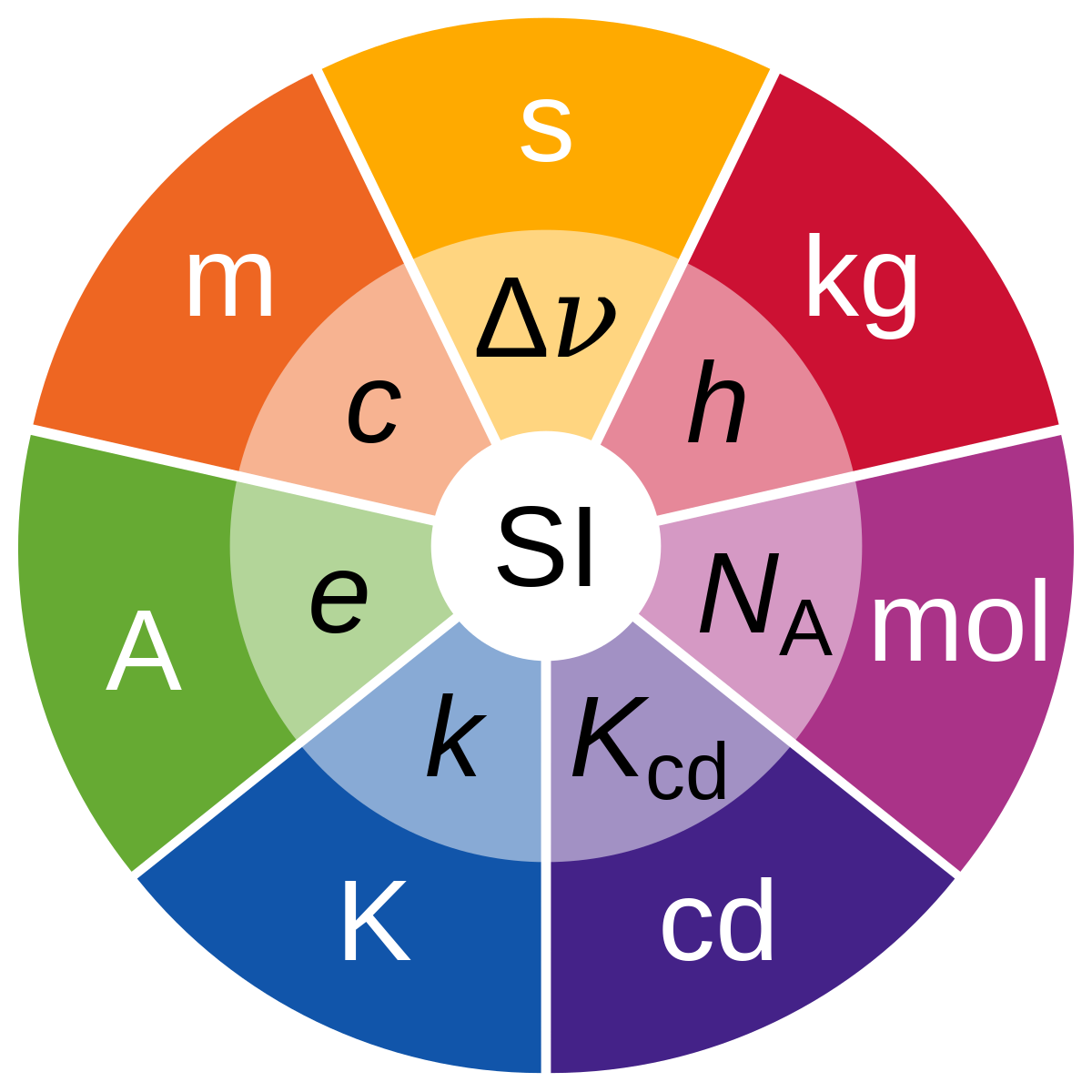
 en.wikipedia.org
en.wikipedia.org
MILS IS METRIC!
The SI-- formally the "metric system"-- unit for angular measure is the radian. Milli is the prefix for 1/1000th. So a milliradian is 1/1000 of a radian, the SI unit for angular measure, and it happens to subtend 1/1000th sideways of the longitudinal distance. 1m at 1km. The math is easy.
To use mils in the english unit of measure you have to convert first to MOA using the easy fact that it takes 2*pi radians to make a complete circle, then 360 degrees * 60 moa/degree for a complete circle, also. Then you are able to easily figure the MOA of the target in inches at a specific yardline, with a quick conversion of 36:1 from yards to inches. Then there is the obvious benefit of fractional graduations vs. the base ten of the metric system.
It's not that complicated and MOA is the obvious winner because you don't have the conversion step from SI to standard when shooting in US ranges that are almost all marked in "yards". Less math, less moving parts, quicker more accurate results.
You're missing the point. A little history for you less educated.

International System of Units - Wikipedia
MILS IS METRIC!
The SI-- formally the "metric system"-- unit for angular measure is the radian. Milli is the prefix for 1/1000th. So a milliradian is 1/1000 of a radian, the SI unit for angular measure, and it happens to subtend 1/1000th sideways of the longitudinal distance. 1m at 1km. The math is easy.
To use mils in the english unit of measure you have to convert first to MOA using the easy fact that it takes 2*pi radians to make a complete circle, then 360 degrees * 60 moa/degree for a complete circle, also. Then you are able to easily figure the MOA of the target in inches at a specific yardline, with a quick conversion of 36:1 from yards to inches. Then there is the obvious benefit of fractional graduations vs. the base ten of the metric system.
It's not that complicated and MOA is the obvious winner because you don't have the conversion step from SI to standard when shooting in US ranges that are almost all marked in "yards". Less math, less moving parts, quicker more accurate results.
Guys guys guys!
You're missing the point. A little history for you less educated.

International System of Units - Wikipedia
en.wikipedia.org
MILS IS METRIC!
The SI-- formally the "metric system"-- unit for angular measure is the radian. Milli is the prefix for 1/1000th. So a milliradian is 1/1000 of a radian, the SI unit for angular measure, and it happens to subtend 1/1000th sideways of the longitudinal distance. 1m at 1km. The math is easy.
To use mils in the english unit of measure you have to convert first to MOA using the easy fact that it takes 2*pi radians to make a complete circle, then 360 degrees * 60 moa/degree for a complete circle, also. Then you are able to easily figure the MOA of the target in inches at a specific yardline, with a quick conversion of 36:1 from yards to inches. Then there is the obvious benefit of fractional graduations vs. the base ten of the metric system.
It's not that complicated and MOA is the obvious winner because you don't have the conversion step from SI to standard when shooting in US ranges that are almost all marked in "yards". Less math, less moving parts, quicker more accurate results.
Ok dudes, the OP has a small point for a certain set of users. Not me. I use mils.
You hate these users. I smile at them that little smile that says, “There’s a better way, but you go Buddly, go.”
Buddly’s probably your dad. But you love him.
That’s fine. I think.
I didn’t misspell Buddly, buddy.
Maybe, if they’re interested, point them this way. But in all cases, do not engage in debate!
IDEAL USER WHO DESERVES & LIKES MOA
(there’s a lot more of them than us)
Jimmy does not think, “Missed Roy’s nads by 3 (insert angular measurement here).”
For the Jimmys of the world, can we quit whinging and concede this tiny point and retreat into our glorious MRAD Fortress of Solitude?

You hate these users. I smile at them that little smile that says, “There’s a better way, but you go Buddly, go.”
Buddly’s probably your dad. But you love him.
That’s fine. I think.
I didn’t misspell Buddly, buddy.
Maybe, if they’re interested, point them this way. But in all cases, do not engage in debate!
IDEAL USER WHO DESERVES & LIKES MOA
(there’s a lot more of them than us)
- Is a simple man
- Eats meat…
- That he shoots
- Uses Imperial measurements (inches/yds)
- Has a reticle without an effective way to measure much of…anything (simple crosshair)
- Probably uses a SFP scope
- Target shooting: Only shoots at 100 yds to zero scope
- Kills stuff often at 30-200yds, 300-400yds, max.
- Doesn’t use a laser rangefinder
- Looks at the hole in the target paper through the spotter, and thinks, “I’ve missed by about 3 inches.”
- Changes turret by 3 MOA. Hits bullseye. Goes hunting. Kills stuff like he and his forebears have done since guns were invented.
Jimmy does not think, “Missed Roy’s nads by 3 (insert angular measurement here).”
For the Jimmys of the world, can we quit whinging and concede this tiny point and retreat into our glorious MRAD Fortress of Solitude?
Last edited:
I'm definitely at this end on a fairly regular schedule:But which end?
Mils is standard.Guys guys guys!
You're missing the point. A little history for you less educated.

International System of Units - Wikipedia
en.wikipedia.org
MILS IS METRIC!
The SI-- formally the "metric system"-- unit for angular measure is the radian. Milli is the prefix for 1/1000th. So a milliradian is 1/1000 of a radian, the SI unit for angular measure, and it happens to subtend 1/1000th sideways of the longitudinal distance. 1m at 1km. The math is easy.
To use mils in the english unit of measure you have to convert first to MOA using the easy fact that it takes 2*pi radians to make a complete circle, then 360 degrees * 60 moa/degree for a complete circle, also. Then you are able to easily figure the MOA of the target in inches at a specific yardline, with a quick conversion of 36:1 from yards to inches. Then there is the obvious benefit of fractional graduations vs. the base ten of the metric system.
It's not that complicated and MOA is the obvious winner because you don't have the conversion step from SI to standard when shooting in US ranges that are almost all marked in "yards". Less math, less moving parts, quicker more accurate results.
1 yard at 1000 yards.
mil is based off the thousandth of a radian. kind of like the metric system.. mil is in the name..
See how easy this is?
4 inch @ 400 yds = 1 MOA so if I am 2 inches low 1/2 moa adjustment
5 inch @ 500 yds = 1 MOA so if I am 2 inches low 1/4 moa adjustment
14.4 inch @ 400 yds = 1 Mil
18 inch @ 500 yds = 1 Mil
Watch this guy he breaks it down pretty good.
Then watch the math for this one.
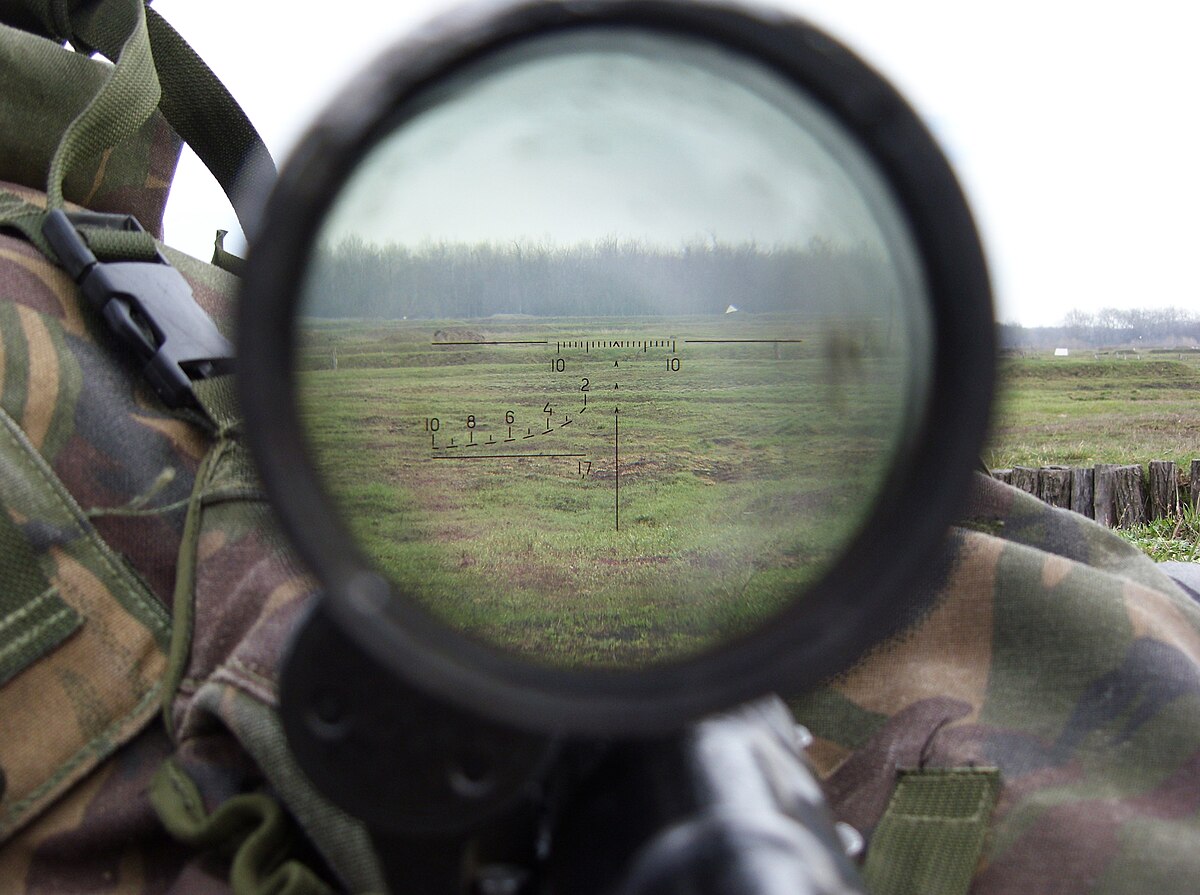
Milliradian - Wikipedia
en.wikipedia.org
If you'r shooting two inches low at 500 yards on a steel plate how to you determine that you are 2 inches low? Walk out and measure it with a tape measure or use the ruler in your scope that says you're 5 quaarks low and make the adjustment? Mils, Moa, quaarks, cookies etc..., it doesn't really matter what you call them as long as they match the reticle in the scope.
I suppose the math is important to second focal plane folks. With first focal plane, if your shot is low by X, you just adjust your turrets based upon however how many dots it was low. i.e. If my shot is 2.5 MIL (or MOA) low, I click up to compensate that exact amount. No Math needed, at any distance.
If you consider the math troublesome, consider a scope upgrade.
For short range (100 yards), I appreciate that most good MOA scopes adjust in 1/10th of an inch increments at 100 yards. For those who are shooting match grade air rifles at 100 yards, with a quarter inch bulls-eye, that kind of granularity is nice. A MIL scope is about 0.36 inch per click by comparison. At longer distances, people don't normally obsess about the quarter inch difference.
If you consider the math troublesome, consider a scope upgrade.
For short range (100 yards), I appreciate that most good MOA scopes adjust in 1/10th of an inch increments at 100 yards. For those who are shooting match grade air rifles at 100 yards, with a quarter inch bulls-eye, that kind of granularity is nice. A MIL scope is about 0.36 inch per click by comparison. At longer distances, people don't normally obsess about the quarter inch difference.
You were doing soooooo good until you got to this paragraph.For short range (100 yards), I appreciate that most good MOA scopes adjust in 1/10th of an inch increments at 100 yards. For those who are shooting match grade air rifles at 100 yards, with a quarter inch bulls-eye, that kind of granularity is nice. A MIL scope is about 0.36 inch per click by comparison. At longer distances, people don't normally obsess about the quarter inch difference.
1 MOA is 1.047" at 100 yards. Therefore an an MOA scope will likely have 1/4 MOA (~ 0.26") adjustments, some have 1/8 MOA (~0.13") adjustments. I've seen the crazy F-Class amd benchrest guys do the 1/8 MOA stuff because they have weapon systems that can register the differences. There are no MOA scopes in existence that do 1/10" adjustments.
So closseeeeee
You are correct.. they don't go down to a tenth. I let my typing fingers get ahead of my thinking.. but in the final analysis, the units of change are smaller on a high end MOA scope... which was the point I was trying to make.You were doing soooooo good until you got to this paragraph.
1 MOA is 1.047" at 100 yards. Therefore an an MOA scope will likely have 1/4 MOA (~ 0.26") adjustments, some have 1/8 MOA (~0.13") adjustments. I've seen the crazy F-Class amd benchrest guys do the 1/8 MOA stuff because they have weapon systems that can register the differences. There are no MOA scopes in existence that do 1/10" adjustments.
So closseeeeee
Clearly overkill. I use a 12v
Actually, your battery outputs 10.8v, but I use milliamperes to measure everything.Clearly overkill. I use a 12v
Including my penis
You’re are correct sir. Sorry, my bad I was using moaamperes .
What rings should I use.

You do know that there are scopes that have .05 mil turret adjustments right?You are correct.. they don't go down to a tenth. I let my typing fingers get ahead of my thinking.. but in the final analysis, the units of change are smaller on a high end MOA scope... which was the point I was trying to make.
I have not had the good fortune of finding such a beast, I suspect they are less common than 1/8 MOA. I just looked it up, and could only find it as a factory option on a Leopold Mk 4You do know that there are scopes that have .05 mil turret adjustments right?
Ok.. I guess I have completely lost people on this one. It is easier to use MOA than Mil since MOA equals close to whole numbers in inches and equals the same whole numbers at the corresponding yardage. Or maybe not.. maybe people like converting mil to corresponding yardage. Who am I to say what is easier or not.
My argument is like saying..
I have 8 oz in a cup.. how many oz are in 1/2 a cup?
vs
I have 8 oz in a cup.. how many oz are in a liter?
why the hell are you even thinking in inches anyway? When you shoot and spot you dont make call out in inches. You dont say “impact was this many inches low and so many inches left” you make call outs using your reticle which is in minutes or mils. you adjust in minutes or mils. You dont adjust in inches. Quit making life so hard on yourself. If the people you shoot with are making call outs in inches, you need to find a different group of people to shoot with.
I have not had the good fortune of finding such a beast, I suspect they are less common than 1/8 MOA. I just looked it up, and could only find it as a factory option on a Leopold Mk 4
A few more just for reference. Yes expensive, but there you are:
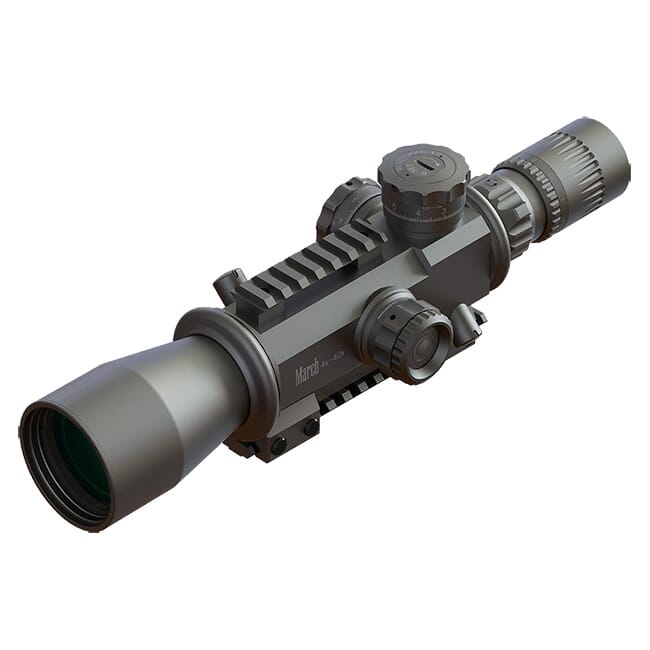
March Genesis Tactical 4-40x52G FML-3 Reticle 0.05 Mil Illuminated FFP Riflescope D40V52GFIML
FREE SHIPPING on March Genesis Tactical 4-40x52G FML-3 Reticle 0.05 Mil Illuminated FFP Riflescope D40V52GFIML
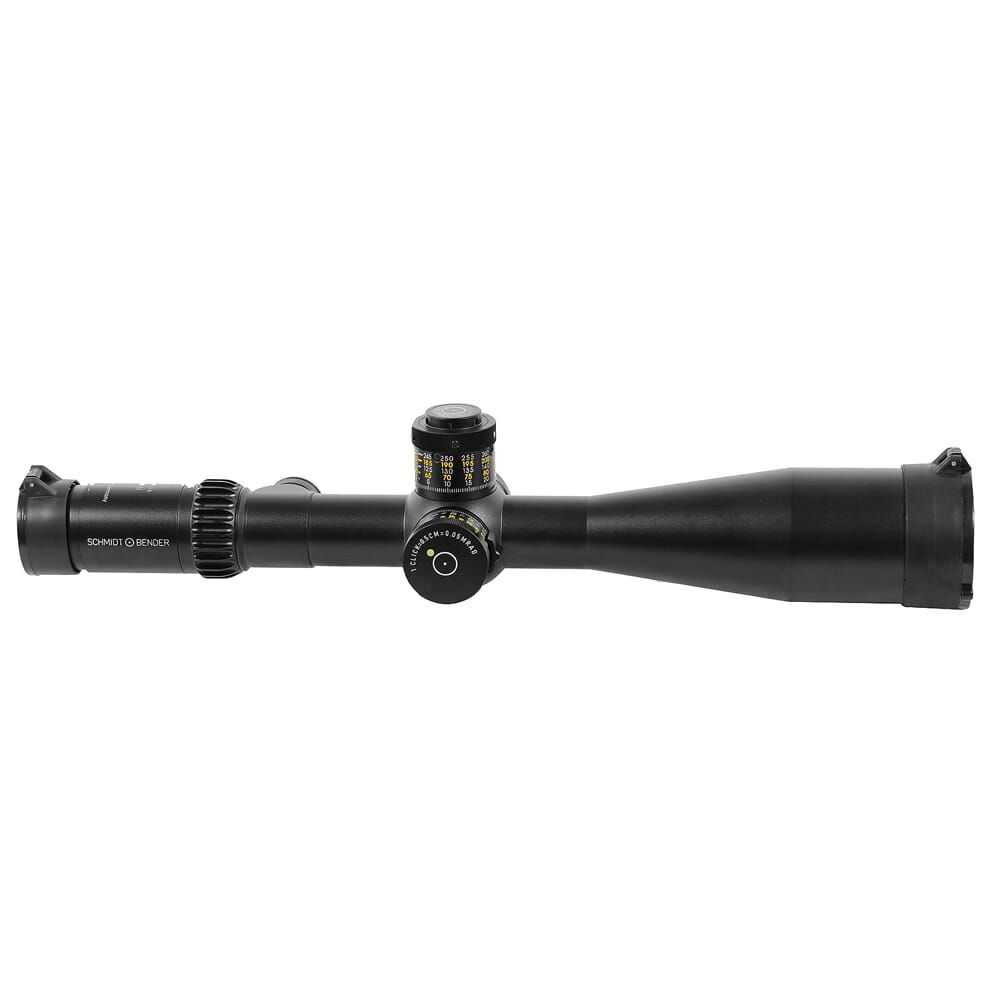
Schmidt Bender PM II 5-25x56 LP LRR-MIL 1/2cm cw MT II MTC LT / DT II+ ZC Black Riflescope 677-911-41C-I2-H6
FREE SHIPPING on Schmidt Bender PM II 5-25x56 LP LRR-MIL 1/2cm cw MT II MTC LT / DT II+ ZC Black Riflescope 677-911-41C-I2-H6
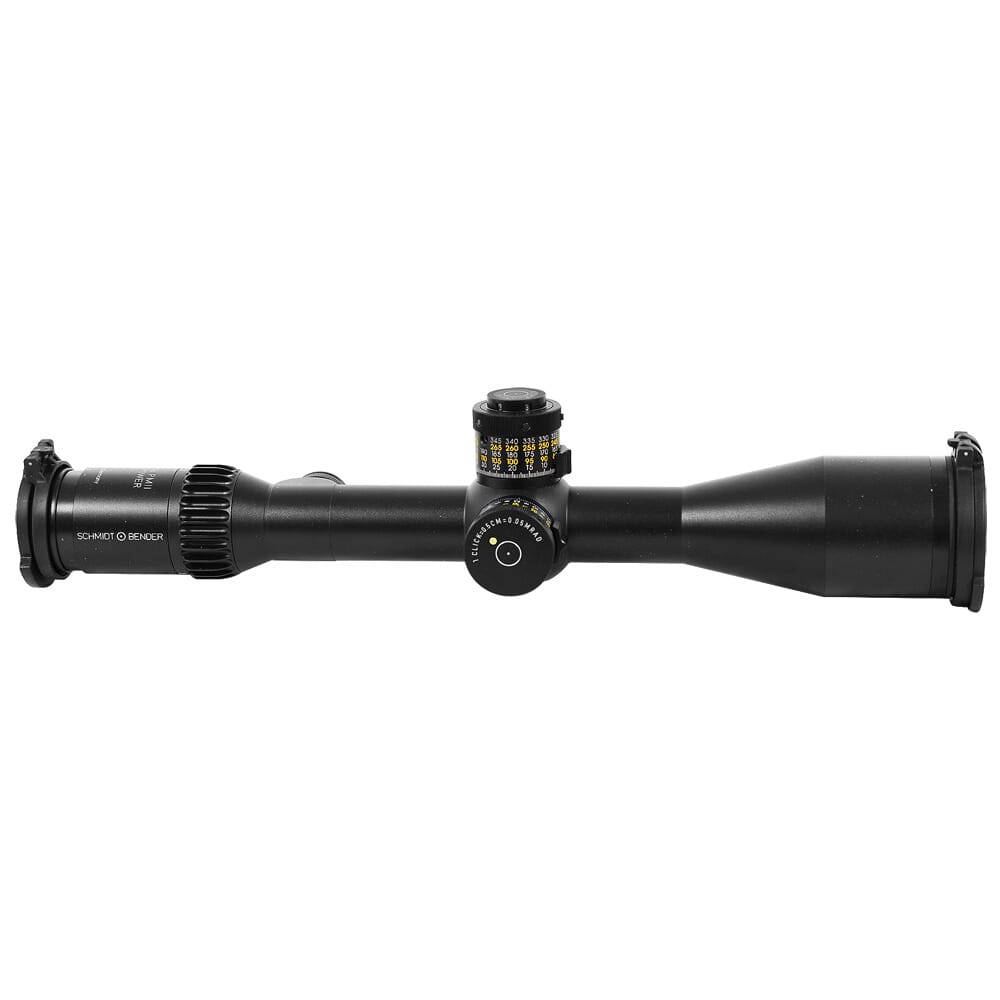
Schmidt Bender PM II 3-27x56 High Power MT II MTC LT / DT II+ ZC LT GRID .05 mrad Riflescope 669-911-422-I5-H5
FREE SHIPPING on Schmidt Bender PM II 3-27x56 High Power MT2 GRID .05 mrad Riflescope 669-911-422-I5-H5
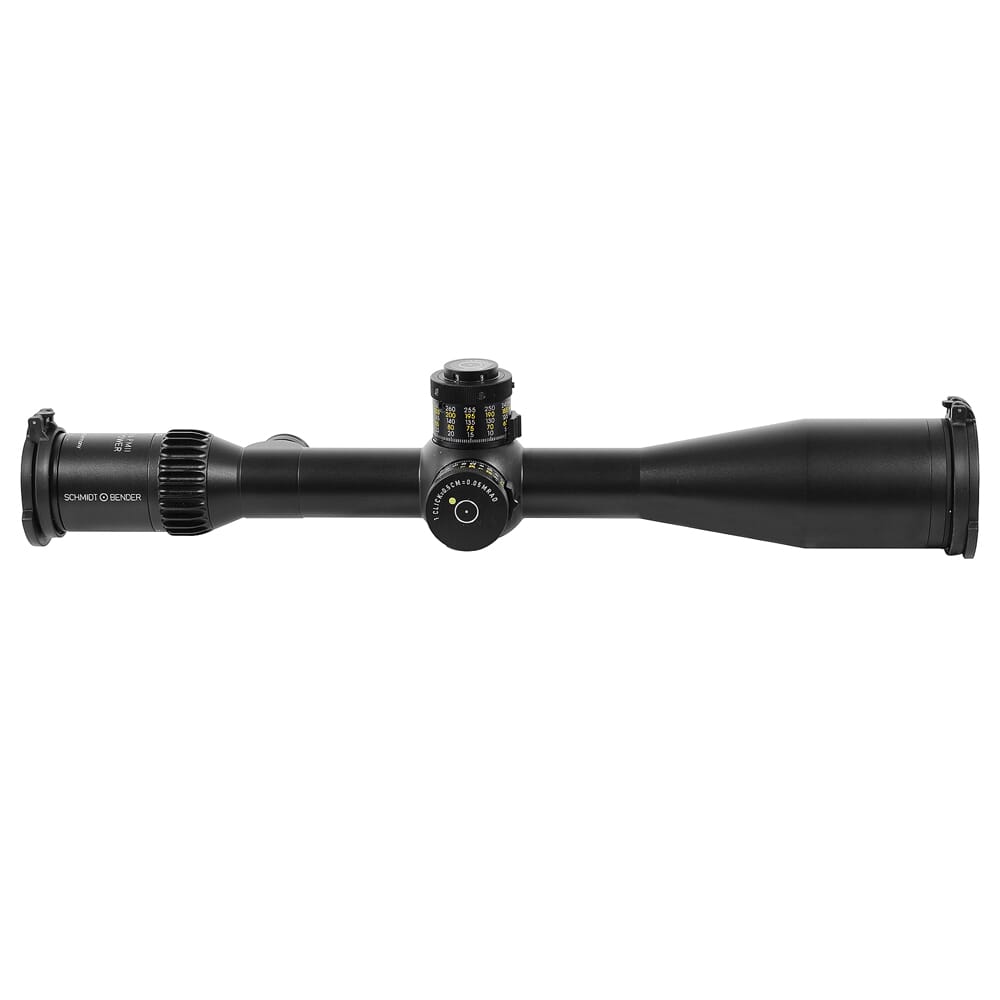
Schmidt Bender 5-45x56mm PM II High Power LP MSR2 1/2cm ccw MT II MTC LT / DT II+ ZC LT Riflescope 666-911-842-I1-H5
FREE SHIPPING on Schmidt Bender 5-45x56 PM II High Power LP MSR2 1/2cm ccw MT II MTC LT / DT II+ ZC LT
D
Deleted member 113831
Guest
Dammit we’re still only in page three!!! Get busy berating one another other!
Since this is supposed to be Infomational per subforum... and boost page count.... Some modest advice:
1. If the morons you shoot with use Mils. then use Mils.
2. If they use MOA, then use MOA.
3. If neither, or both, then seek out different morons.
4. Repeat until you can somehow, inexplicably, magically, comminicate effectively on the line.
1. If the morons you shoot with use Mils. then use Mils.
2. If they use MOA, then use MOA.
3. If neither, or both, then seek out different morons.
4. Repeat until you can somehow, inexplicably, magically, comminicate effectively on the line.
“You’re about 18” off the left bottom edge...”
Only if you have the magnification at a level different from where reticle is calibrated. Otherwise, focal plane is irrelevantI suppose the math is important to second focal plane folks.
If you're going to wade in at least know what you're talking about. MOA scopes adjust in 1/2, 1/4, or 1/8 MOA (not inch) incrementsFor short range (100 yards), I appreciate that most good MOA scopes adjust in 1/10th of an inch increments at 100 yards.
There is no scope out there that adjusts in 0.1 MOA or 0.1 inch/100 yard increments
To be fair, there were some scope makers who actually were using IPHY (inch per hundred yard), aka SMOA (shooter's MOA) instead of true MOA in their turrets, thus adding more to the confusion on the MOA side of the coin. Fortunately, I don't think anyone is still making turrets using IPHY. Good riddance.
What the hell? Are you a pirate sailing the seven seas? What the heck is that thing?
HUH????Mils is standard.
1 yard at 1000 yards.
All this time I thought it was 1 meter at 1000 meters.
That would make this thread a lot more tolerable.
Those pesky deer don't seem to want to stop at exactly at the distance the scope is calibrated for. You must be luckier than me.Only if you have the magnification at a level different from where reticle is calibrated. Otherwise, focal plane is irrelevant
I now really want to see a scope manufacturer offer 1/8 & 1/16 mil or 1/5 & 1/10 moa.Only if you have the magnification at a level different from where reticle is calibrated. Otherwise, focal plane is irrelevant
If you're going to wade in at least know what you're talking about. MOA scopes adjust in 1/2, 1/4, or 1/8 MOA (not inch) increments
There is no scope out there that adjusts in 0.1 MOA or 0.1 inch/100 yard increments
Nope it's 1 fathom acorss at 1000 fathoms awayHUH????
All this time I thought it was 1 meter at 1000 meters.
Similar threads
- Replies
- 7
- Views
- 435
- Replies
- 11
- Views
- 670
Rifle Scopes
Noob 6.5prc / 30moa rail zeroing question
- Replies
- 4
- Views
- 365
- Replies
- 7
- Views
- 779
